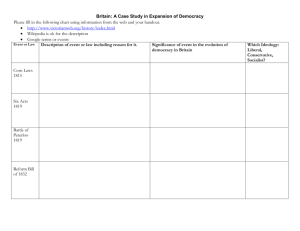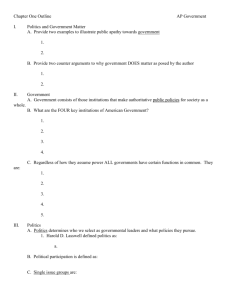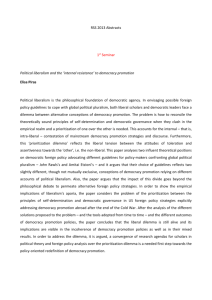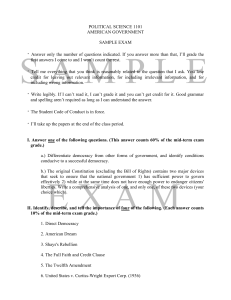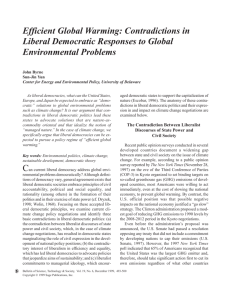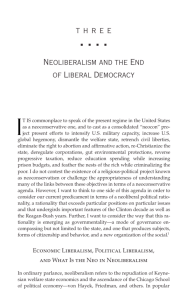Review - Rhodes University
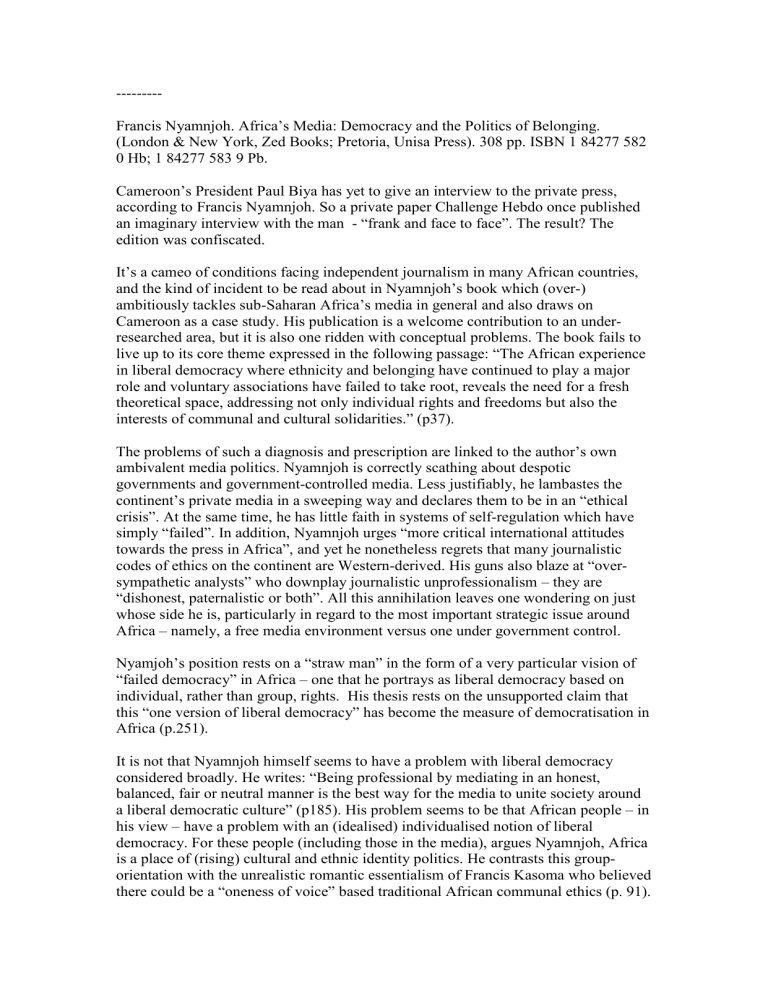
---------
Francis Nyamnjoh. Africa’s Media: Democracy and the Politics of Belonging.
(London & New York, Zed Books; Pretoria, Unisa Press). 308 pp. ISBN 1 84277 582
0 Hb; 1 84277 583 9 Pb.
Cameroon’s President Paul Biya has yet to give an interview to the private press, according to Francis Nyamnjoh. So a private paper Challenge Hebdo once published an imaginary interview with the man - “frank and face to face”. The result? The edition was confiscated.
It’s a cameo of conditions facing independent journalism in many African countries, and the kind of incident to be read about in Nyamnjoh’s book which (over-) ambitiously tackles sub-Saharan Africa’s media in general and also draws on
Cameroon as a case study. His publication is a welcome contribution to an underresearched area, but it is also one ridden with conceptual problems. The book fails to live up to its core theme expressed in the following passage: “The African experience in liberal democracy where ethnicity and belonging have continued to play a major role and voluntary associations have failed to take root, reveals the need for a fresh theoretical space, addressing not only individual rights and freedoms but also the interests of communal and cultural solidarities.” (p37).
The problems of such a diagnosis and prescription are linked to the author’s own ambivalent media politics. Nyamnjoh is correctly scathing about despotic governments and government-controlled media. Less justifiably, he lambastes the continent’s private media in a sweeping way and declares them to be in an “ethical crisis”. At the same time, he has little faith in systems of self-regulation which have simply “failed”. In addition, Nyamnjoh urges “more critical international attitudes towards the press in Africa”, and yet he nonetheless regrets that many journalistic codes of ethics on the continent are Western-derived. His guns also blaze at “oversympathetic analysts” who downplay journalistic unprofessionalism – they are
“dishonest, paternalistic or both”. All this annihilation leaves one wondering on just whose side he is, particularly in regard to the most important strategic issue around
Africa – namely, a free media environment versus one under government control.
Nyamjoh’s position rests on a “straw man” in the form of a very particular vision of
“failed democracy” in Africa – one that he portrays as liberal democracy based on individual, rather than group, rights. His thesis rests on the unsupported claim that this “one version of liberal democracy” has become the measure of democratisation in
Africa (p.251).
It is not that Nyamnjoh himself seems to have a problem with liberal democracy considered broadly. He writes: “Being professional by mediating in an honest, balanced, fair or neutral manner is the best way for the media to unite society around a liberal democratic culture” (p185). His problem seems to be that African people – in his view – have a problem with an (idealised) individualised notion of liberal democracy. For these people (including those in the media), argues Nyamnjoh, Africa is a place of (rising) cultural and ethnic identity politics. He contrasts this grouporientation with the unrealistic romantic essentialism of Francis Kasoma who believed there could be a “oneness of voice” based traditional African communal ethics (p. 91).
But he puts in its place another questionable essence: “most Africans are primarily patriotic to their home village, to which state and country in the modern sense are only secondary” (p.26). Forget about the sociology of globalisation and ignore migrancy between town and city, for Nyamnjoh it is simply that ancient Africa that is at odds with modern individualistic democracy.
It is on this basis that he hammers what he deciphers as “the limitations of a liberal democratic model that blindly emphasises individual freedoms in a context where actors are also and obviously more committed to group freedoms and solidarity networks” (p.250). His alternative? Recognise the “politics of belonging”, and have a
“broader definition of democracy” which would allow for “ethnic cultural citizenship” as well as “civic citizenship” and for the straddling of both (p.250). Accordingly,
Nyamnjoh advocates that democracy in Africa should be theorised as "a marriage of individual, cultural and community interests" (p. 250). Building on this distinctly vague conceptualisation, Nyamnjoh then argues that “what are currently perceived as failings on the part of the media (eg. ethnic biases, partisanship, regionalism) could indeed be healthy practices, as it would be quite understandable to have media defending particular group interests openly, rather than in camouflage as is the case under the liberal democratic model.” (p.250).
This amounts to a circular argument. Summed up, it suggests that because reality falls short of a particular (artificial) portrayal of liberal democracy, you simply redefine the ideal and the problem falls away.
Instead of tilting at windmills, Nyamnjoh could have deployed the notion of liberal democracy as being about competing interests and how these are peacefully negotiated (as opposed to being suppressed). Because he is blinded by the individualism issue, he does not see that much of the media landscape in Africa reflects a vibrant, and positive, diversity in action (despite suppressive tendencies by many states). Instead, his position leads to him to strange remark that “contrary to some optimistic accounts…, media that have facilitated genuine democratisation may appear rare in Africa”.
Unfortunately, the analysis author not only fails to recognise liberal pluralism as a perspective and a reality, it also does not go beyond it. Thus, Nyamnjoh explicitly under-rates civil society (and thereby the role of churches, sports groups, community organisations, etc) as a democratic factor, and he fails to dissect relations between civil society and the media. And indeed of community radio, there is little mention in the book.
Part of Nyamjoh’s problem is that he over-generalises about the role of the media without regard to significant distinctions between sectors. Thus, he declares that “the media cannot expect accountability when they themselves are not accountable, nor expect tolerance when they themselves are not tolerant” (p.99). However, in liberal democratic theory, it is usually expected that it is the public sector of the media that has accountability obligations to be neutral and non-partisan, whereas private media are free to take whatever position they or their owners wish. Further, the assumption is that both public and private media sectors should be independent of government as such.
That Nyamnjoh does not see these issues clearly is related to his lack of deployment of the concept of the Public Sphere (updated and adapted to Africa). Accordingly, absent from this book is a notion that democracy requires a shared and open arena of news and views – that is, for meanings expressed by individuals and groups, and disseminated widely by both journalistic sinners as well as saints. In determining the conditions for such a Public Sphere, the African state is the primary agent – or, in many countries, the primary culprit.
Not for Nyamnjoh, however. His strategic focus seems more attuned to blaming independent media for sensationalism and a lack of professionalism. But, speaking in
2002, Nelson Mandela told the Johannesburg-based Institute for the Advancement of
Journalism: “A bad free press is preferable to a technically good, subservient press.”
It is a sentiment on whose bedrock Nyamnjoh ought to have written his book. It is certainly worth reading, but we will have to look elsewhere for “fresh theoretical space” to analyse the roles of media and democracy in Africa.
Prof Guy Berger, Head of School of Journalism and Media Studies, Rhodes
University, South Africa.

